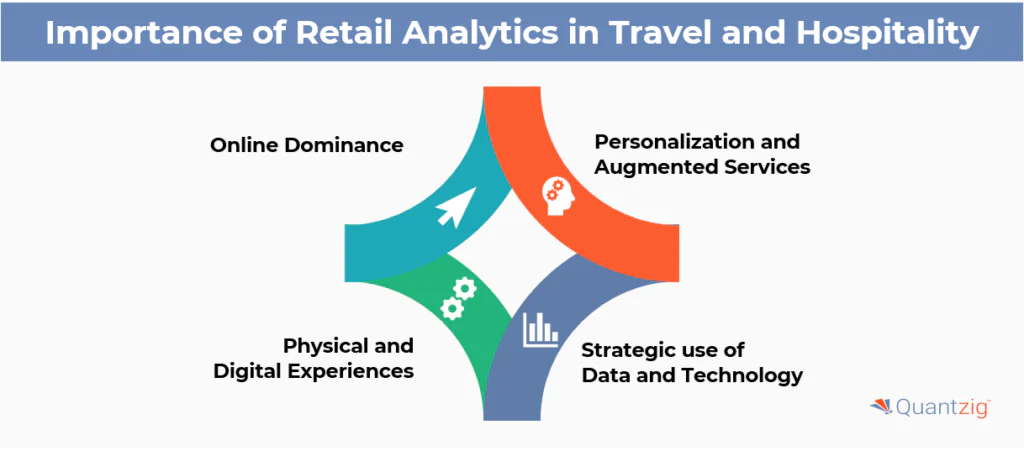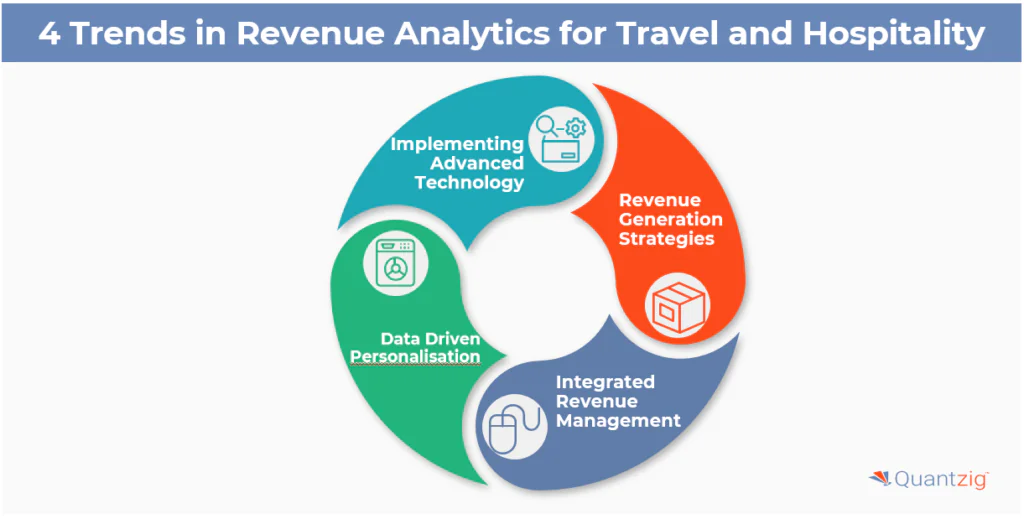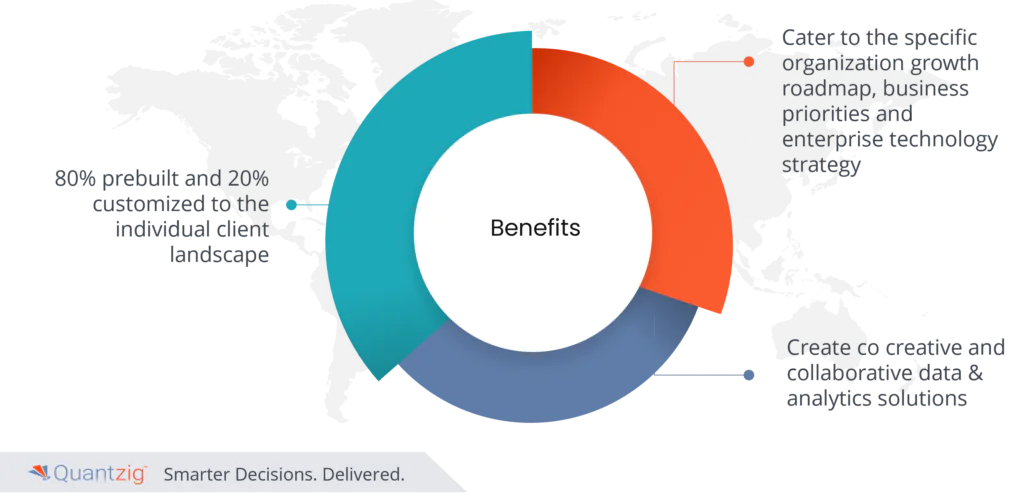Table of Contents
Introduction to Revenue Analytics
The travel and hospitality sector, the path to sustained success lies in harnessing the transformative potential of revenue analytics. From the use of big data and AI-driven pricing strategies to personalization and demand forecasting, this exploration unveils the key traveling trends and innovative technologies that are revolutionizing revenue management.
As we delve deeper into this landscape, it becomes clear that staying ahead in the highly competitive travel and hospitality sector requires a data-driven approach that optimizes pricing, enhances guest experiences, increase churn rate and drives profitability in an ever-changing market.
Book a demo to experience the meaningful insights we derive from data through our analytical tools and platform capabilities. Schedule a demo today!
Request your free Demo nowImportance of Revenue Analytics in the Travel & Hospitality Sector

The travel and hospitality sector is experiencing a profound digital transformation, with nearly 90% of the customer journey, from initial discovery and exploration to booking and post-trip engagement, taking place in the online sphere. These innovative strategies also embrace augmented personalization, tailoring services and recommendations to individual traveler preferences.
Customer intelligence, enriched experiences, and interactive engagements have become the cornerstone of business operations in this sector. Companies recognize that unlocking growth and maintaining a competitive edge hinges on their ability to understand, predict, and respond to the unique needs and desires of travelers. As a result, strategic investments in digital technologies, data analytics, churn rate and personalization are not just operational choices but strategic imperatives for travel and hospitality businesses looking to thrive in the digital age.
What are the Trends and Technologies of Revenue Analytics in the Travel and Hospitality Sector?

Trend 1: Enhanced Revenue Generation Strategies through Data Insights
Travel and hospitality businesses are leveraging revenue analytics to make informed revenue-related decisions. This approach, particularly effective for B2B businesses, B2C businesses, SaaS businesses and D2C brands, focuses on growth marketing and conversion rate optimization, driving up average order value (AOV), customer acquisition cost (CAC) and customer lifetime value (CLV). Integrated revenue analytics software facilitates revenue forecasting, aiding in setting and achieving revenue goals, ultimately optimizing return on investment (ROI) and recurring revenue metrics like monthly recurring revenue (MRR) and annual recurring revenue (ARR).
Trend 2: Implementing Advanced Technologies for Operational Efficiency
There’s a shift towards utilizing machine learning algorithms and revenue optimization analytics for operations analytics. This involves integrating revenue analytics solutions to streamline data collection, return on investment (ROI) and analysis processes. By doing so, businesses gain revenue intelligence, enabling them to identify trends, forecast revenue more accurately, and adapt revenue generation strategies dynamically with average order value (AOV). Ultimately, this trend empowers businesses to optimize revenue while maintaining a focus on operational efficiency and data-driven decision-making.
Trend 3: Data-Driven Personalization in Customer Experience
Businesses are increasingly utilizing revenue analytics to enhance customer experiences. By leveraging customer data and predictive analytics techniques, they develop ideal customer personas and segment customers based on behavior and preferences. Through the integration of CRM systems and email software, businesses track revenue analytics metrics such as average order value (AOV), return on investment (ROI), customer acquisition cost (CAC) and customer lifetime value (CLV) to continuously refine their offerings and marketing efforts.
Trend 4: Integrated Revenue Management Solutions for Operational Efficiency
Another emerging trend in the travel and hospitality sector is the adoption of integrated revenue management solutions. By integrating ERP systems and cloud-based reporting platforms with revenue analytics software, B2B businesses and B2C businesses, D2C brands streamline data collection and interpretation processes. This allows for real-time tracking of revenue data, ideal customer persona and key performance indicators, facilitating informed decision-making and proactive revenue optimization.
Experience the advantages firsthand by testing a customized complimentary pilot designed to address your specific requirements. Pilot studies are non-committal in nature.
Request a Free PilotChallenges faced while implementing revenue analytics in the Travel & Hospitality Sector

Humanizing interactions in fully digital customer journeys presents a complex challenge. Off-the-shelf customer data platforms (CDPs) primarily cater to the demand side and Management Intelligence Systems (MIS) serving the supply side often fall short of fulfilling localized business priorities and expectations.
The intricacy lies in the need for personalized, context-aware, and culturally attuned interactions within the revenue optimization analytics, which generic CDPs and MIS systems may not inherently offer. To bridge this gap, businesses must consider customizing or augmenting their technology solutions to align with localized needs using revenue optimization analytics. Achieving humanized interactions within digital journeys is not a one-size-fits-all endeavor, and businesses must adapt their technological tools to cater to the diverse expectations and nuances of their customer base.
Benefits of implementing revenue analytics in the Travel & Hospitality Sector

The ideal solution in the ever-evolving landscape of customer analytics and business process engineering is a harmonious blend of prebuilt components and tailored customizations. Striking this balance, typically around 80% prebuilt and 20% customized, allows businesses to leverage established best practices while aligning the solution precisely with their unique organizational landscape.
Such a nuanced approach takes into account the organization’s growth roadmap, business priorities, ideal customer persona and enterprise technology strategy, ensuring that the solution not only meets current needs but also aligns seamlessly with future objectives.
Furthermore, the advent of Citizen Development platforms, powered by innovative technologies like Power Platforms and cloud-native tools, empowers clients to foster a DIY analytics culture and increase the churn rate. This facilitates co-creation and collaborative development of data and analytics solutions. It’s a transformative approach that enhances responsiveness and innovation in the fast-paced world of data-driven decision-making.
Get started with your complimentary trial today and delve into our platform without any obligations. Explore our wide range of customized, consumption driven analytical solutions services built across the analytical maturity levels.
Start your free Trial nowConclusion
The future of revenue analytics in the travel and hospitality domain promises to be nothing short of transformative. As we conclude our exploration of emerging trends and technologies, it’s clear that the industry is on the cusp of a data-driven renaissance. From AI-driven pricing strategies to personalization and demand forecasting, the innovative landscape of revenue management is set to revolutionize how travel and hospitality businesses operate. The ability to optimize pricing using Revenue Intelligence, enhance guest experiences, and drive profitability in a rapidly changing market is now at the industry’s fingertips. As we move forward with Revenue Intelligence, success will belong to those who harness the power of analytics and future of travel technology to unlock new levels of efficiency, profitability, and guest satisfaction.



